This guide breaks down the best types of web hosting based on your needs—whether you’re launching your first site or managing a growing business. You’ll learn which hosts perform best in different scenarios and how to choose the right one for your goals.
Choosing the wrong web host isn’t just frustrating—it can cost you in downtime, sluggish site speed, and lost revenue. A solid host keeps your site online, fast, and secure, while a bad one can quietly sabotage your success.
Personally, what matters most to me is that the host doesn’t create headaches. I want a simple, clean interface so I can get my site set up fast—and then never have to think about my hosting again unless I choose to. A great host powers your site smoothly in the background and only steps in when you need support.
Price also matters—a lot. I’ve talked to hundreds of website owners, and budget is always a top concern, especially for new projects. That’s why this guide highlights options that deliver strong performance without draining your wallet. There’s no need to overpay for features you won’t use in the early stages.
Whether you’re building your first website or adding another to your portfolio, the providers below offer everything you need to get online and stay there successfully.
The Top 7 Best Web Hosts for 2025
All of the providers above offer reliable, well-rounded services that make launching and managing a website hassle-free.
Want more detail? Let’s break down what makes each of these web hosts a top choice in 2025.
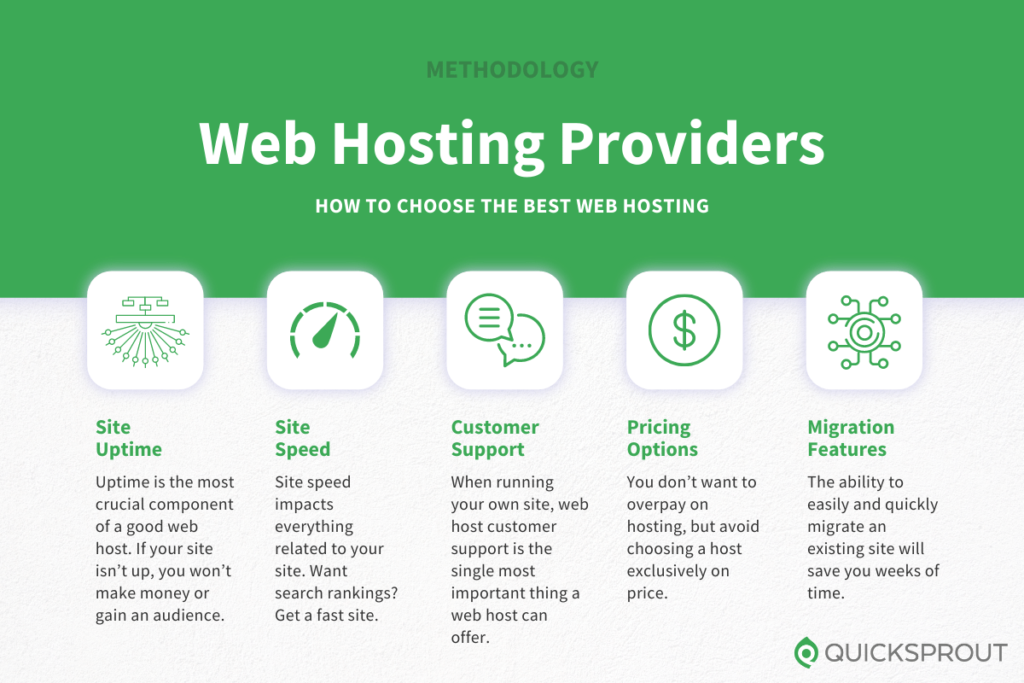

Hostinger – Best Overall
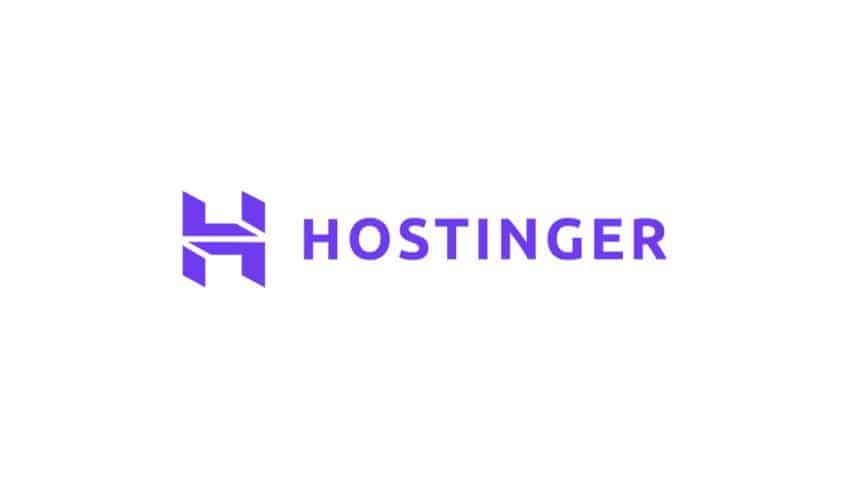

Hostinger delivers high-performance web hosting at one of the lowest entry-level prices around. Shared hosting plans start at just $1.99/month and include weekly backups, a free SSL certificate, and enough bandwidth for 10,000 monthly visitors—more than enough for most new sites.
Many other hosts charge extra for backup services, but Hostinger includes them for free, which adds peace of mind without increasing your bill.
The most popular option is the Premium Shared Hosting plan at $2.99/month. With it, you can host up to 100 websites, handle 25,000 monthly visitors, and get a free domain for your first year—plus 100 GB of SSD storage and an included SSL certificate.
If you need more performance or storage, it’s easy to upgrade to one of Hostinger’s VPS or cloud plans, which scale seamlessly as your traffic grows.
Hostinger’s custom control panel, hPanel, is one of the easiest on the market. It’s clean, modern, and organized with intuitive icons. A built-in auto-installer makes setting up WordPress (or any CMS) as easy as clicking a button.
They’ve also added a dedicated WordPress dashboard inside hPanel, allowing you to manage updates, plugins, and maintenance mode in one place. There’s even a one-click link to access your WordPress admin directly from the Hostinger panel.
Performance-wise, you’re in good hands. Every WordPress install comes preloaded with LiteSpeed Cache for WordPress (LSCWP), which leverages server-level caching and optimization to boost speed significantly.
Hostinger backs everything with a 99.9% uptime guarantee and 24/7 customer support via live chat, which is fast and responsive based on our tests.
Want a deeper breakdown? Read our full Hostinger review here.
DreamHost – Best Value for Shared Hosting


DreamHost powers over 1.5 million websites and is known for offering transparent, high-value hosting that’s easy to manage—especially for beginners. They combine speed, affordability, and great policies in one simple package.
DreamHost stands behind its service with a 100% uptime guarantee—something very few hosts offer—and will credit your account if they fall short. Plus, they have one of the longest money-back guarantees in the industry: 97 days.
Even on their budget plans, you get unlimited traffic and free daily backups. That’s rare—most low-cost hosts either limit bandwidth or charge extra for backup tools.
DreamHost also protects your privacy by offering free domain WHOIS protection. Many other hosts charge extra for this, but it’s included by default here.
They’re one of just three hosting providers officially recommended by WordPress.org. WordPress installation is one click, and you’ll also get automatic updates, free site migration, and a built-in WordPress website builder with every plan.
So even if you’ve never built a website before, you can get up and running fast—and make updates easily without touching a line of code.
The Shared Starter plan starts at just $2.59/month for a single website. This is one of the best price-to-performance options for small websites, portfolios, blogs, and nonprofits that want low-hassle hosting with excellent reliability.
Our full DreamHost review explores all plans and features in more depth.
Support is handled by DreamHost’s in-house team. While phone support is an optional add-on for shared hosting, you still get access to 24/7 support via live chat and email tickets—and the knowledge base is very well organized.
Sign up with DreamHost today for reliable, low-maintenance hosting that won’t break the bank.
SiteGround – Best for Extra Speed and Security
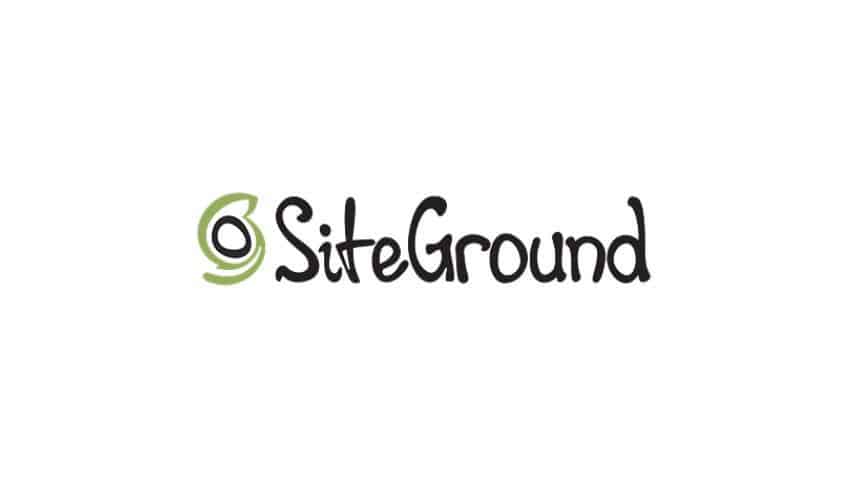

SiteGround is one of the fastest and most secure web hosts available—especially for WordPress users. Right now, they’re offering up to 80% off annual plans with free site migration included, making it an excellent time to join.
Their infrastructure is built on top of Google Cloud, which gives SiteGround blazing-fast performance with ultra-reliable SSD storage and global reach. Everything is optimized for low latency and rapid page loads.
You don’t have to worry about speed optimization or backend security—SiteGround handles it all. From the moment you launch your WordPress site, they’re working behind the scenes to keep it fast and secure.
Security is another standout. SiteGround’s AI-powered security system blocks between 500,000 and 2 million brute-force attacks per hour. They also run server health checks every 0.5 seconds to detect and resolve issues before they escalate.
As a WordPress-recommended host, SiteGround also includes added protection for WP sites—like automatic plugin and core updates, daily backups, and a smart firewall specifically tuned for WordPress vulnerabilities.
All plans include one-click WordPress installs, SiteGround’s WP Starter tool, and an easy-to-navigate control panel. You get auto-updates, staging tools, and built-in caching without needing any extra plugins.
Here’s a look at SiteGround’s current pricing for new customers (billed annually):
- StartUp: $2.99/month – Ideal for single-site beginners
- GrowBig: $4.99/month – Supports unlimited sites with more resources
- GoGeek: $7.99/month – Advanced features like staging and Git
Plans renew at higher rates after the first term, but SiteGround offers renewal discounts for longer contracts. Two-year terms get 20% off renewal pricing, and three-year terms get 30% off—great for long-term savings.
Bottom line: If performance and security are priorities for your website, SiteGround is a premium option that justifies the investment. Their features are especially beneficial for WordPress users and growing sites.
Want more details? Check out our full SiteGround review.
Bluehost – Best for New WordPress Websites
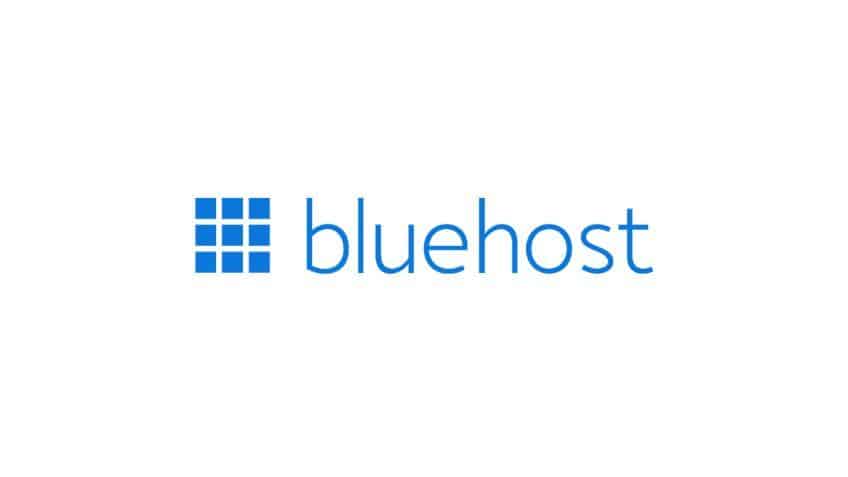

Bluehost remains one of the most beginner-friendly hosting providers in 2025—especially for WordPress sites. It’s officially recommended by WordPress.org and consistently ranks as one of the easiest hosts to get started with.
From the moment you sign up, Bluehost walks you through each step—from setting up your blog or online store to configuring your email and SSL certificate. It’s ideal for first-time users who want a smooth experience without technical hiccups.
If you run into trouble, 24/7 customer support is available via phone and live chat. You’ll find quick links to support on every page of your dashboard, so help is always just a click away.
Installing WordPress is just one click, and the Bluehost app marketplace lets you easily add eCommerce tools, SEO plugins, CRMs, and more with minimal effort.
What sets Bluehost apart is the inclusion of marketing and analytics tools. You’ll also get built-in SEO features that help track your keyword rankings and optimize your site for search engines—perfect for beginners who want to grow traffic quickly.
Bluehost’s Basic shared hosting plan usually costs $9.99/month, but new users can get it for as low as $4.75/month with a three-year commitment. It’s a great way to lock in affordable pricing while getting all the essentials for your first website.
Like many hosts, Bluehost does raise prices after the promo period ends. That’s why we recommend choosing a longer contract up front if the budget allows—it keeps your monthly cost low and avoids surprise renewal jumps.
If your site starts to grow, Bluehost has you covered. You can upgrade to managed WordPress hosting, VPS, or dedicated servers without migrating to a new provider.
While Bluehost works best with WordPress, you can use it with other CMS platforms too. Just be aware that anything outside WordPress may require extra setup or backend maintenance.
Try Bluehost today risk-free with their 30-day money-back guarantee.
For more insights, see our detailed Bluehost hosting review.
Scala Hosting – Best Upgrade from Shared Hosting
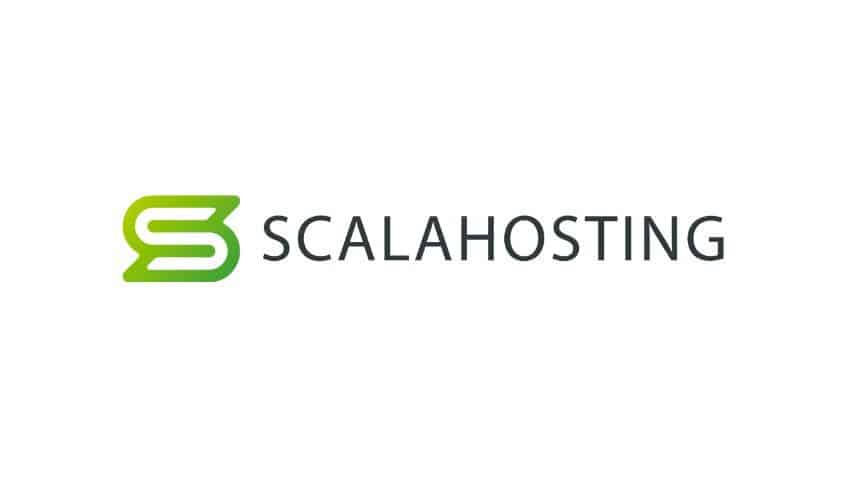

If your site has outgrown shared hosting—or you know you need more performance and control from the start—Scala Hosting is one of the best ways to level up without breaking the bank.
While Scala offers shared hosting (starting at $2.95/month), their Entry Cloud plan is the real standout. It combines dedicated server resources with a surprisingly low price, making it an ideal entry point into cloud hosting.
With Entry Cloud, you get guaranteed resources: two CPU cores and 2 GB of RAM that aren’t shared with other customers—so you’ll never deal with noisy neighbors slowing your site down.
You’ll also get 50 GB of NVMe SSD storage, which is significantly faster than traditional SSDs. Need more space? Add extra storage at any time with a simple one-time fee, from 10 GB all the way to 2 TB.
Each plan also includes a year of free domain registration, daily backups, SSL certificates, and a robust suite of premium features like:
- 24/7 SShield malware protection
- OpenLiteSpeed caching for faster page loads
- Dedicated IP address
- Scala’s priority support
- Dedicated firewall for added security
- Custom access roles for site and server management
In short, Scala Hosting gives you serious speed, control, and flexibility at a price most managed VPS providers can’t match. It’s perfect for users who are outgrowing shared hosting or building mission-critical sites from day one.
The Entry Cloud plan starts at just $14.95/month when you sign up for a 3-year contract—about $538 total for three years of premium-level hosting.
Prefer a shorter term? Scala offers flexible billing: one year is $19.95/month, and month-to-month plans are $29.95. Renewal pricing for 1- and 3-year terms is discounted to $24.95/month, offering additional long-term savings.
If you’re ready to take your hosting up a notch, Scala Hosting’s Entry Cloud plan is one of the best-performing options in its class.
HostGator – Best for Simple Websites
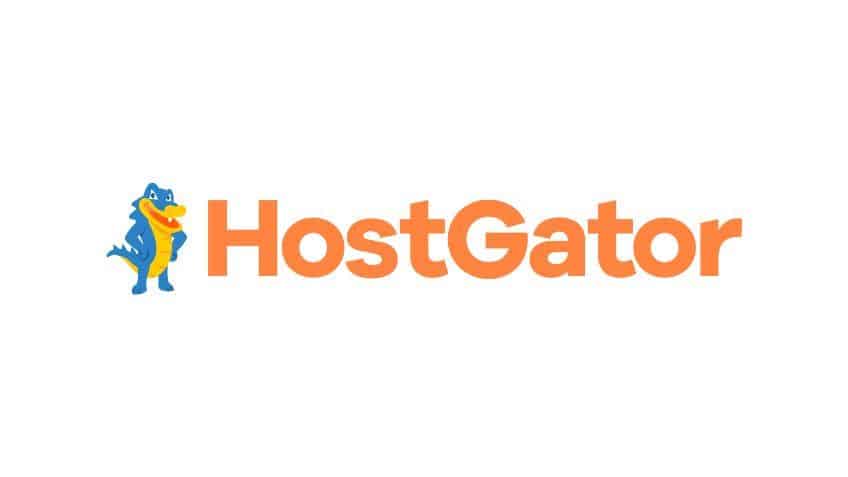

HostGator is a budget-friendly, beginner-friendly host that gives you all the essentials for getting a basic site online fast. It’s especially great for business info pages, portfolios, or simple product/service websites.
Plans come with a 45-day money-back guarantee and include unmetered bandwidth, a free SSL certificate, and free domain registration for the first year. That’s everything you need to get started, without unnecessary extras or hidden fees.
If you’re new to hosting, HostGator has a huge library of how-to tutorials that walk you through everything—from setting up email to using WordPress. If you get stuck, you can reach their support team 24/7 via live chat, phone, or email.
They also offer optional services like SEO tools and marketing packages, which are handy if you want a little help optimizing your site for search engines without hiring an expert.
Unlike some low-cost providers, HostGator includes support access in all of their plans. You don’t have to pay extra just to get help when you need it.
HostGator also supports both Linux and Windows hosting—a nice bonus for developers or companies with specific tech stacks. And if your site starts to grow, they offer affordable upgrades to cloud hosting, managed WordPress, VPS, and even dedicated servers.
Their Hatchling shared hosting plan usually starts at $2.75/month with a 3-year commitment, which keeps your cost extremely low over time. Month-to-month options are also available, but they’re more expensive per month.
If you’re considering HostGator, take advantage of the 45-day refund window to test performance and support before committing long-term. It’s a low-risk way to evaluate if this host is a good fit for your needs.
WP Engine – Best Managed WordPress Hosting
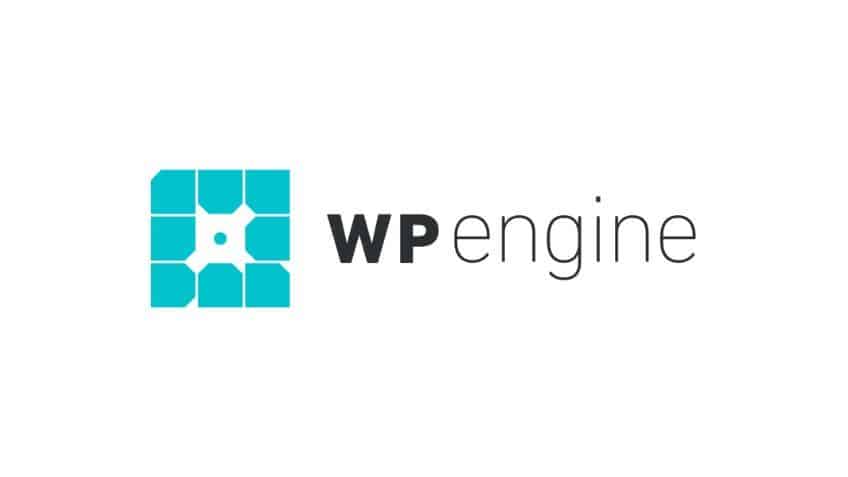

WP Engine is the gold standard when it comes to premium managed WordPress hosting. It’s built specifically for WordPress sites and delivers exceptional performance, security, and hands-off maintenance.
If you want the fastest, most secure environment for your WordPress site and don’t want to deal with backend headaches, WP Engine is worth every penny.
Of course, this quality comes at a price. WP Engine’s entry-level plan starts at $20/month for a single site with 10 GB storage and up to 25,000 monthly visitors. If you sign up annually, you get two months free—and Quicksprout often features exclusive discounts for even better deals.
Despite the higher cost, WP Engine provides value in ways other hosts don’t. It’s a fully managed platform with everything tailored to WordPress—fast server-level caching, automatic backups, malware scanning, one-click staging environments, and built-in performance monitoring.
Unlike general-purpose hosts, WP Engine’s infrastructure is custom-built for WordPress. That means your site loads faster, scales better, and gets patched for WordPress vulnerabilities automatically. Most tasks that would normally take time or technical knowledge are handled for you behind the scenes.
They also offer WooCommerce-optimized plans that include access to premium WordPress ecommerce themes and high-performance tools that would otherwise cost hundreds of dollars on their own.
WP Engine’s support is also exceptional. Their team only deals with WordPress, so you’re getting help from specialists—available 24/7 via live chat and support tickets. You won’t find yourself explaining what a plugin is to someone reading from a script.
Want the full breakdown? Check out our in-depth WP Engine review for all the details on pricing, plans, and features.
Bottom line: If you’re running a serious WordPress site and want blazing speeds, top-tier security, and expert-level support without lifting a finger, WP Engine is hands down one of the best hosts available in 2025.
Types of Web Hosting
Not sure what kind of hosting you need? Whether you’re looking for the cheapest option, the fastest load times, or the easiest setup, understanding the main types of web hosting will help you make a smarter choice.
Below are some of the most common hosting categories. Each one has its pros and cons, depending on your goals, technical comfort level, and traffic expectations.
How To Find the Best Host for You
You don’t need to be a developer to choose a great hosting plan—but understanding a few key factors can help you avoid costly mistakes.
In this section, I’ll walk you through the most important criteria to consider when picking a host. With this in mind, you’ll be able to choose a plan that fits your needs now—and scales with you later.
So, what actually matters when comparing web hosting providers?
Let’s break it down step by step.
Site Uptime
Uptime is the most critical factor—if your site is down, visitors can’t reach you and you lose traffic, leads, and revenue. Website uptime should always be at or above 99.9%.
Most hosts advertise 99.9% uptime and offer a service level agreement (SLA) that compensates you with hosting credits if they fall short. Just know that many SLAs include lots of fine print and may exclude third-party uptime monitoring or downtime caused by natural disasters.
For example, HostGator offers a free month of hosting if their uptime dips below 99.9%—but only if you report it using their process. Always read the SLA.
Site Speed
Your website’s speed directly affects SEO rankings, user experience, and conversions. If your site is slow, people will bounce—and Google will notice. Site performance matters more than ever.
When evaluating hosts, make sure they offer fast servers, caching, and support for CDNs. LiteSpeed, NGINX, NVMe SSDs, and integrated caching tools are signs of a performance-minded host.
You don’t need enterprise-level speed when you’re just starting, but your site should load quickly—especially on mobile. As your traffic grows, you’ll want a host that can keep up without lag.
Think of it like Amazon: when they sold only books, fast was good enough. But now that people expect instant shopping, speed is critical. Your site may be the same one day—choose a host that scales with you.
Customer Support
Customer support is one of the most overlooked factors when choosing a host—but it becomes crucial the moment something breaks.
It’s easy to be fooled by glowing reviews on big-name blogs, but real-life support experiences vary widely between hosts.
The best way to evaluate support? Use the free trial or refund window to test it. Open support tickets. Use live chat. Call in. See how responsive, knowledgeable, and helpful the team is before you commit.
Also pay attention to the host’s knowledge base and documentation. A solid self-help center is a good sign that they take support seriously.
Traffic Volume
Traffic volume is a key factor in determining which plan is right for you.
If your site gets fewer than 500 visitors per day (roughly 15,000/month), shared hosting is usually enough. Just make sure you’re getting decent uptime and support.
Once your traffic grows, you’ll need a plan that can scale. That includes features like:
- Up-to-date PHP and MySQL versions
- Daily backups with easy restores
- Support for content delivery networks (CDNs)
- SSL certificates (for HTTPS)
- Ability to handle traffic surges during promotions or launches
When I build larger sites, I go with a premium host that handles all this for me. And if I plan to grow to millions of monthly visits, I make sure I can scale up without switching providers.
If you’re staying under 50,000 monthly visitors, shared hosting is fine. No need to overcomplicate it. But if you’re aiming higher, invest in infrastructure that grows with you.
Price
It’s tempting to go with the cheapest host—but price alone shouldn’t be the deciding factor.
Most entry-level hosting plans fall in the $2–$10/month range for your first term. But pay close attention to renewal pricing, which often jumps to $8–$25/month after the promo ends.
If the price seems too good to be true, it probably is. Hosts that charge rock-bottom rates often skimp on support or overload their servers, which results in poor performance down the line.
Also, switching hosts later is a pain—especially if you’re not technical. It’s better to pay a little more now for reliable service than to save $1/month and deal with headaches later.
I generally ignore short-term promos and stick with providers that offer long-term value. Once I find a host that works, I stay with them—it’s not worth jumping around just to save a few dollars.
Migration Features
If you’re switching from another provider, site migration tools are a huge timesaver.
Manually moving a WordPress site can take hours and introduce plenty of room for error—especially with themes, plugins, and database settings.
Many hosts now offer one-click or assisted WordPress migrations. If that’s available, use it. You’ll skip all the complex steps and reduce the risk of site downtime or broken functionality.
It’s also a great tiebreaker if you’re torn between two providers—choose the one that offers better migration support.
Managed Hosting
Here’s how traditional web hosting usually works:
- You sign up and get a login to your hosting dashboard (typically cPanel).
- From cPanel, you manage everything—installing software, uploading files, and tweaking server settings.
- You can install WordPress, Magento, Joomla, or build your site from scratch. It’s a full DIY setup.
- You also get FTP access and other tools to control how your server behaves.
- It’s flexible, but requires more technical knowledge to manage properly.
Managed hosting flips that model. These services take care of much of the backend for you—so you can focus on your content or business instead of worrying about server config or security patches.
WP Engine is a great example of a managed host that’s built specifically for WordPress. Instead of a generic cPanel interface, they give you a custom dashboard with tools tailored to WordPress sites.
Because their platform is 100% optimized for WordPress, they can offer benefits that traditional shared hosts simply can’t. Here’s what you typically get:
- Faster load times. Managed hosts fine-tune every layer of the stack for WordPress. That means better caching, more efficient servers, and fewer plugins needed for performance.
- Better security and stability. Because they only support WordPress, managed hosts can proactively protect against common vulnerabilities, auto-patch issues, and monitor uptime more effectively.
- Simplified maintenance. Core updates, backups, plugin compatibility checks—it’s all handled automatically or with one click. You save time and reduce risk.
The tradeoff? You give up a bit of control. With managed hosting, you don’t have full server access like you do with traditional shared or VPS plans. But most site owners don’t need that level of control anyway.
If you’re running a business website or online store and want speed, security, and support without the headaches, a managed host is 100% worth the investment.
But if you’re just launching a personal blog or small site with low traffic, a normal host will probably be all you need to start.
Why I Recommend Hostinger for New and Small Websites
For beginners and small website owners, Hostinger checks all the boxes—and then some.
- Super affordable plans. The entry-level plan starts at around $2.50/month when you sign up for a 4-year promo (then renews at $8/month). That’s one of the cheapest long-term hosting deals out there.
- Exceptionally easy to use UI. I’ve tested dozens of web hosts, and Hostinger’s interface is the most intuitive I’ve ever used. It’s modern, fast, and everything is exactly where you’d expect it to be—no clunky cPanel needed.
- Zero issues since I signed up. Over a year in, I haven’t experienced any downtime, strange errors, or unexpected billing problems. The service just works—exactly how it should.
- Their site migration tool is hands-down the best I’ve used. I moved an entire site from another host to Hostinger in under an hour. No broken links, no configuration problems—it just worked. I remember thinking, “Why didn’t I do this sooner?”
- I’ve never needed to contact support. And that’s a good thing. Great products don’t require you to constantly reach out for help. Everything with Hostinger has worked so smoothly that I’ve never had to open a ticket or start a chat.
I love Hostinger, but it’s not perfect. Here are two drawbacks to keep in mind:
- Monthly billing is expensive. If you want to pay month-to-month, expect to pay around $12/month plus a $5 setup fee. To get the best price, you need to prepay for 4 years—about $120 upfront. That’s what I did, but if you can’t swing it, another host might be better.
- Renewals are higher. After your promo term ends, the $2.50/month plan jumps to $8/month. This is normal across the industry, but still something to budget for.
Honestly, those are the only drawbacks I’ve encountered. Hostinger has been rock-solid, and I don’t hesitate to recommend it to anyone launching a personal site, blog, or small business website.
If you’re okay with the upfront payment model, Hostinger is hands-down the best budget-friendly web host for new websites in 2025. If I were starting a brand new project tomorrow, I’d go with them again without shopping around—unless I was planning to scale fast from day one. In that case, I’d go with WP Engine.
Why I Recommend WP Engine for Growing Businesses
When it comes to hosting for larger websites or high-growth businesses, WP Engine is my go-to. Their plans start at $20/month—which isn’t cheap—but for what you get, it’s more than fair.
After years of testing web hosts and helping businesses get their sites off the ground, I’ve seen that WP Engine is often overkill for small sites. But if you’re scaling or already have traction, the extra cost makes sense.
Here’s why I recommend it so highly:
- It’s a true pro-grade platform. Everyone I’ve interacted with at WP Engine—from sales to support—knows their stuff. Their entire team is built around running high-performance WordPress sites, and it shows.
- Uptime is exceptional. In all my years using WP Engine, I’ve never experienced downtime caused by their platform. Every outage I’ve had was due to a plugin conflict or other site-level issue—and even then, their team helped identify and fix it quickly.
- The feature set is stacked. Staging environments, advanced admin tools, Git support, malware scanning, caching, free SSLs, daily backups—the list goes on. I probably only use 10% of what’s available, but it’s nice knowing the power is there when I need it.
- The support team is world-class. When we migrated between server environments, their team handled every detail. It was one of the smoothest technical transitions I’ve ever been part of. Clear communication, zero surprises.
For my highest-traffic, seven-figure websites, I trust WP Engine without hesitation. I don’t want to be chasing down issues or patching things myself. I want reliability—and WP Engine delivers that at scale.
What’s the downside?
Really, it’s just the price. You’ll pay $20/month minimum, and pricing increases as your traffic and feature needs grow. If every dollar matters to your budget, WP Engine probably isn’t a fit. But if performance and peace of mind are worth paying for, it’s hard to beat.
The Top Web Hosting Providers in 2025
The best web hosting providers offer a range of services—from budget-friendly shared hosting to high-performance managed solutions. Whether you need simplicity, speed, scalability, or support, there’s a provider on this list for you.
As your site grows, your hosting needs will evolve. That’s why it’s important to choose a provider that offers room to scale, solid uptime, fast speeds, and responsive customer support from the start.



